
CUL#1
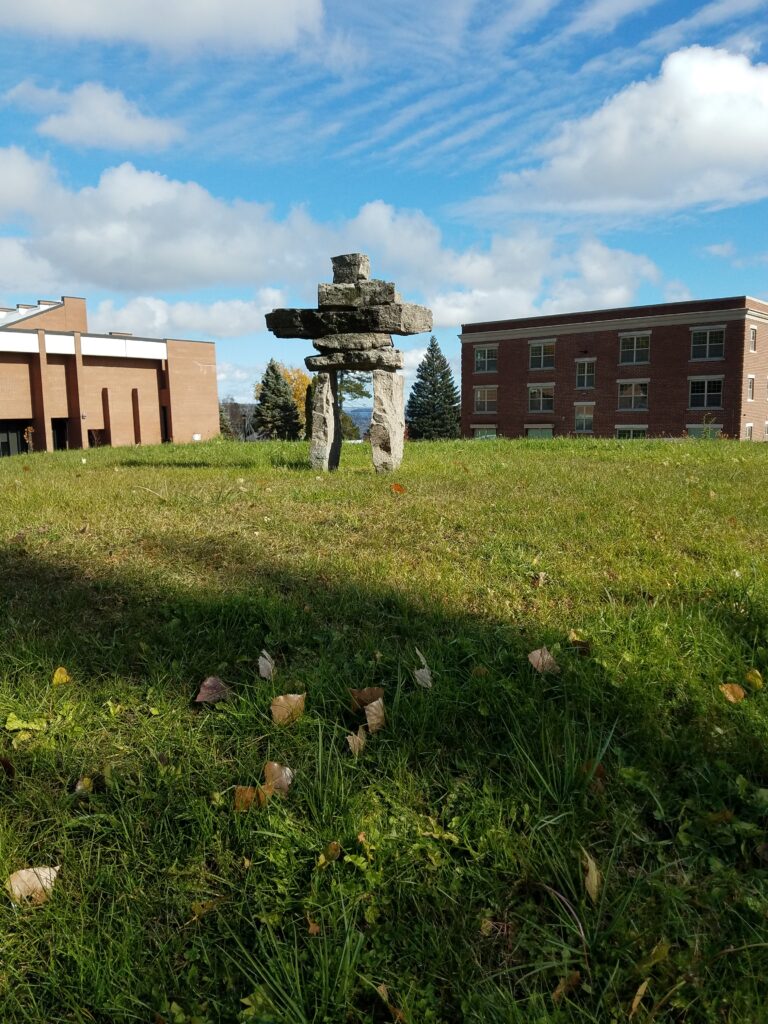
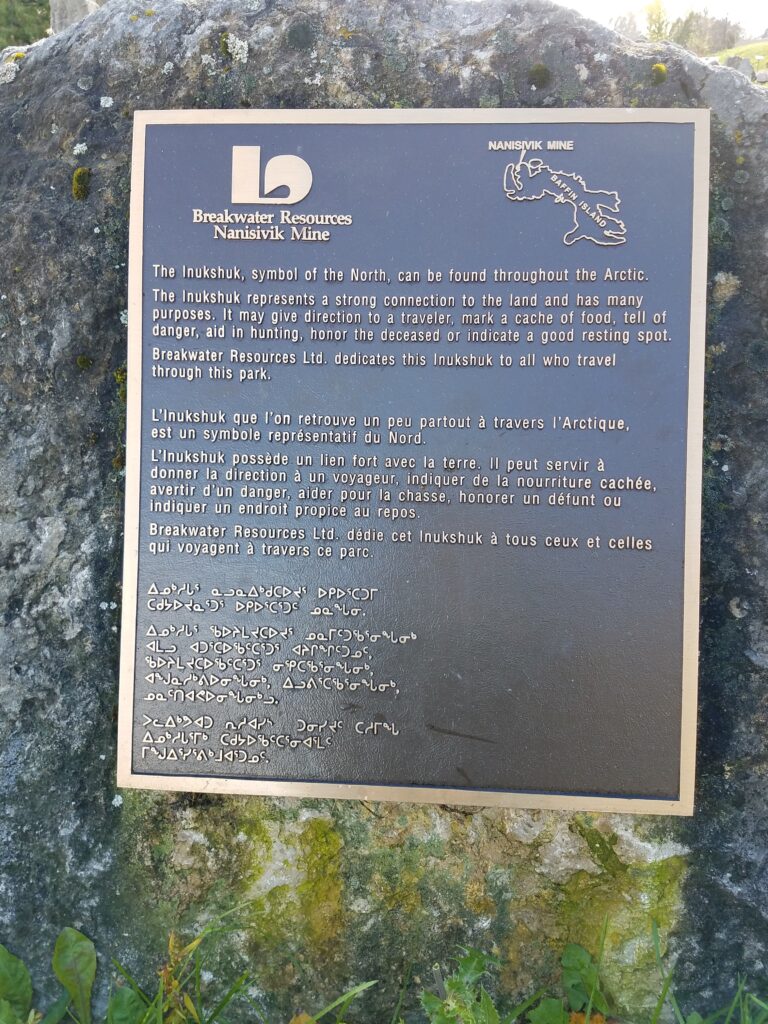
L'Inukshuk sur la crête de l'amphithéâtre a été construit par Breakwater Resources (exploitants de la mine de plomb/zinc de Nanisivik - 1976 -2002) en consultation avec les Iniut de l'île de Baffin. Il a été pré-assemblé, numéroté, désassemblé, emballé dans des caisses et expédié à Haileybury par bateau, train et camion, où il a été assemblé et érigé à son emplacement actuel. Comme vous pouvez le voir sur la plaque d'accompagnement, les Inukshuks sont utilisés dans l'Arctique stérile comme repères, notamment pour garder la direction ... et sont maintenant devenus un symbole non seulement du parc RockWalk, mais aussi du Canada.
Voyage sur internet...chercher : Nanisivik Naval Facility
CUL#2
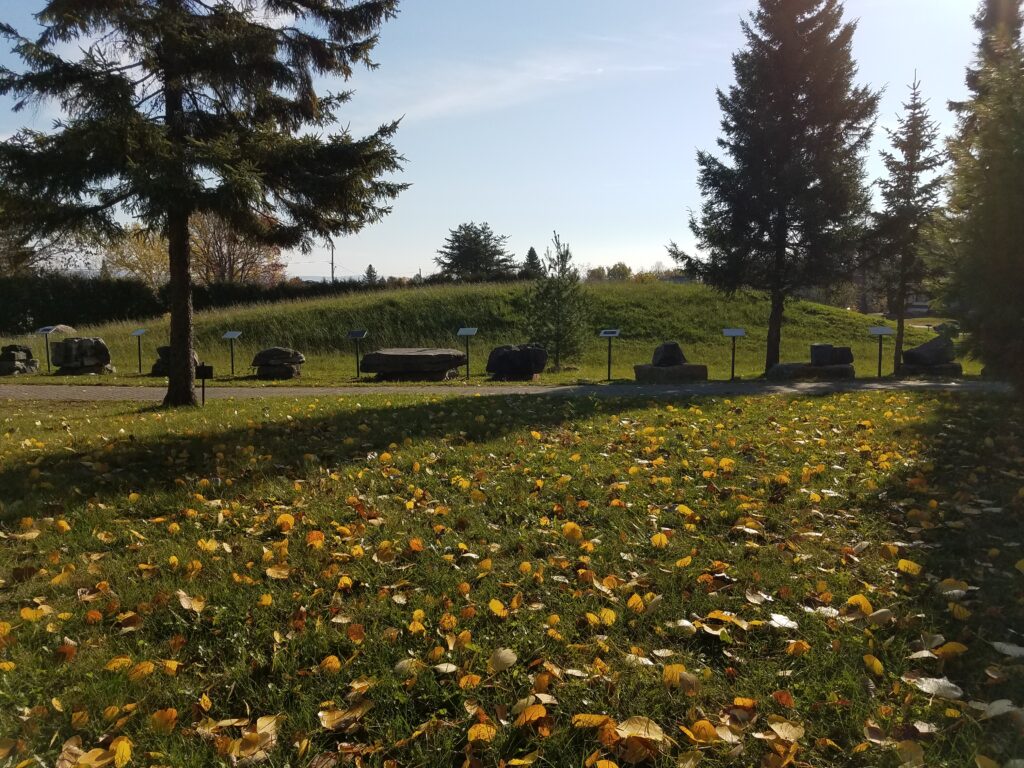
The Drumlin: Developed from fill provided by the digging of a basement under the College Dormitory, this is actually an attempt to develop a glacial landscape feature. Drumlines have a steep “snout” to show what direction the ice was moving, and a long tail to show where it came from. This (fake) Drumlin shows the exact path that the Laurentian Glacier moved along the west shore of the Temiskaming Fault. As a cultural feature, it is well established that humans have, for many Millennia, used the high points of landforms as locations from which to view the distant surroundings.
CUL3#
Map of Canada showing the major geological features and past mining activity. It was originally proposed for a section of the brick pathway.
Sponsor Required
CUL#4
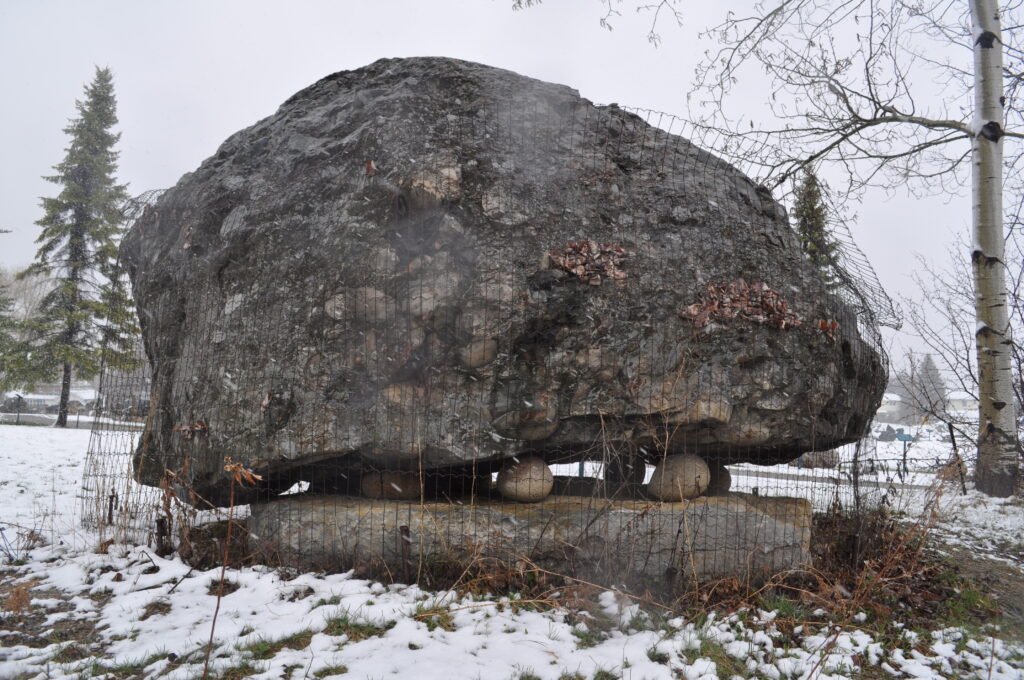
Cet énorme rocher est un erratique glaciaire qui a été déposé pendant la dernière période glaciaire (il y a environ 15 000 à 10 000 ans) près des ateliers de la ville de Haileybury, sur la rue View Ouest. Il a fallu de nombreuses tentatives avec plusieurs grues avant que nous puissions le soulever et le déplacer. Lors de la dernière tentative, une grue de 80 tonnes a réussi à le soulever et à peser le rocher à 45 tonnes (mesure impériale).
Comme vous pouvez le voir, cet échantillon repose (ou est « perché ») sur plusieurs petits rochers granitiques arrondis. La raison en est de simuler un erratique perché trouvé sur les rives du lac Abitibi, qui montre également un pictogramme appelé « La main de Dieu ». (Un autre erratique perché a été localisé au lac Temagami, tandis qu’une troisième repose à l'ancienne décharge de la rivière Montréal, là où elle entrait autrefois dans le lac Témiscamingue... avant son détournement en 1971 pour créer l'installation hydroélectrique de Lower Notch).
Une création aussi inhabituelle a une signification spirituelle pour les autochtones de la région, et nous espérons que les expositions de ce parc aideront à partager l'influence culturelle et révérencieuse que les roches et les motifs rocheux ont créée chez différents peuples du monde.
Information sur la connexion spirituelle sur l’internet : Erratics: Exotic evidence - Bill Steer 2021
CUL#5
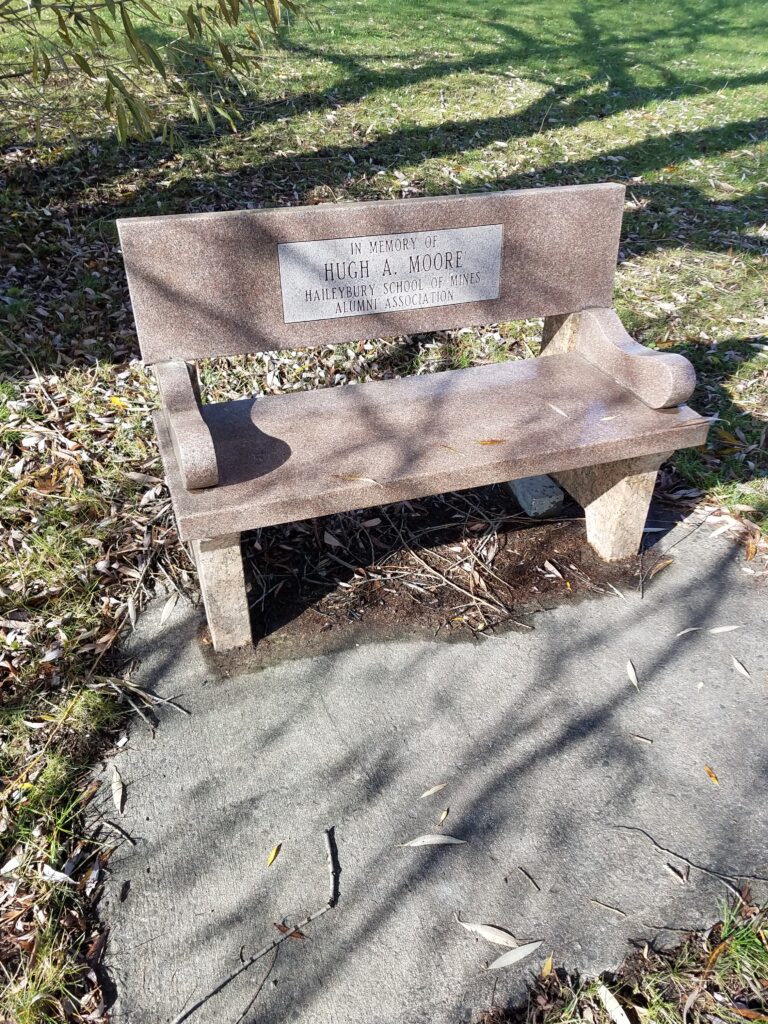
Since the late 20th Century, there has been an increased development in using cut and polished stone for both outdoor and indoor furniture. This was dependent on the new technology equipment
available to cut many shapes, as opposed to the traditional square or rectangular headstones
and monuments of past generations.
On the internet seek: Granite – Affaires Lac-Megantic
https://affairesmegantic.com
CUL#6
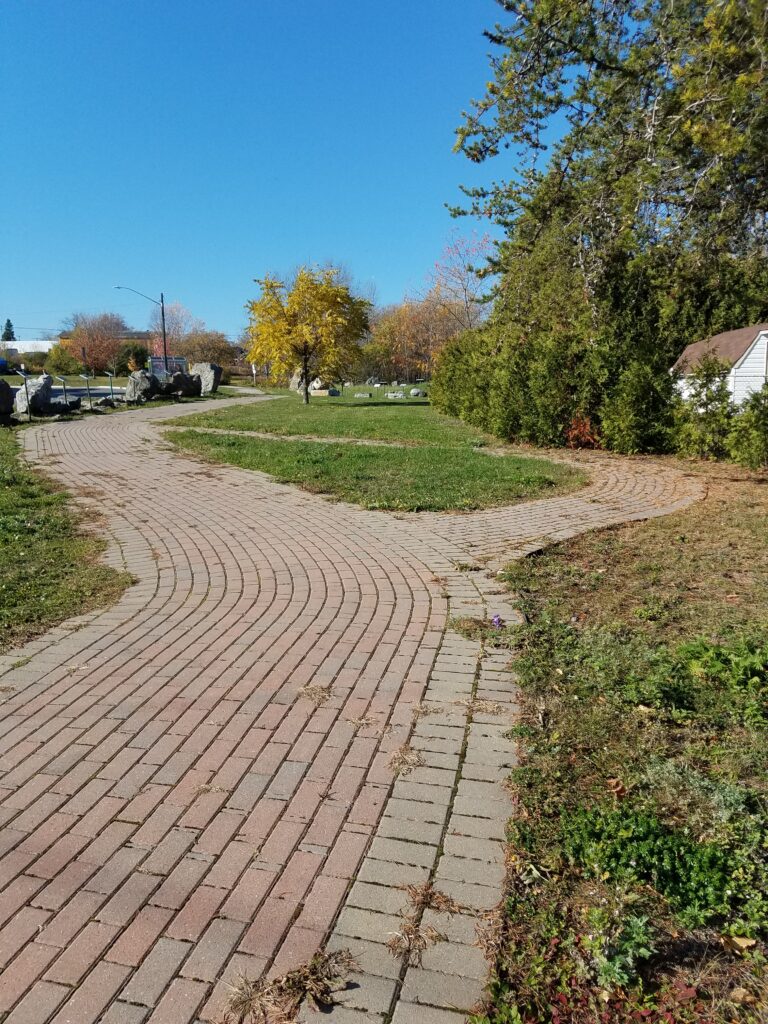
The formal entrance to RockWalk Park is destined to be at the corner of Latchford and Probyn Streets, and facing the turn off the intersection. A pathway that circles the proposed site has been put in place. This will be a primarily stone structure.
A sponsor is required.
CUL#7
There is one rock exhibit situated in what is proposed to be a ZEN GARDEN (Garden of Meditation and Tranquility). This idea was based on a much larger Japanese Memorial Garden in the Arboretum of the University of Guelph (see internet). It was felt that the partial shielding of the pine trees could be enhanced by bamboo fence and the typical wooden arches of such sites. This was an idea of the RockWalk Park Landscape Architect, Mary-Jo Gordon. Japanese Gardens make the most out of a very small space. RockWalk Park Inc. continues to look for a sponsor.
CUL#8
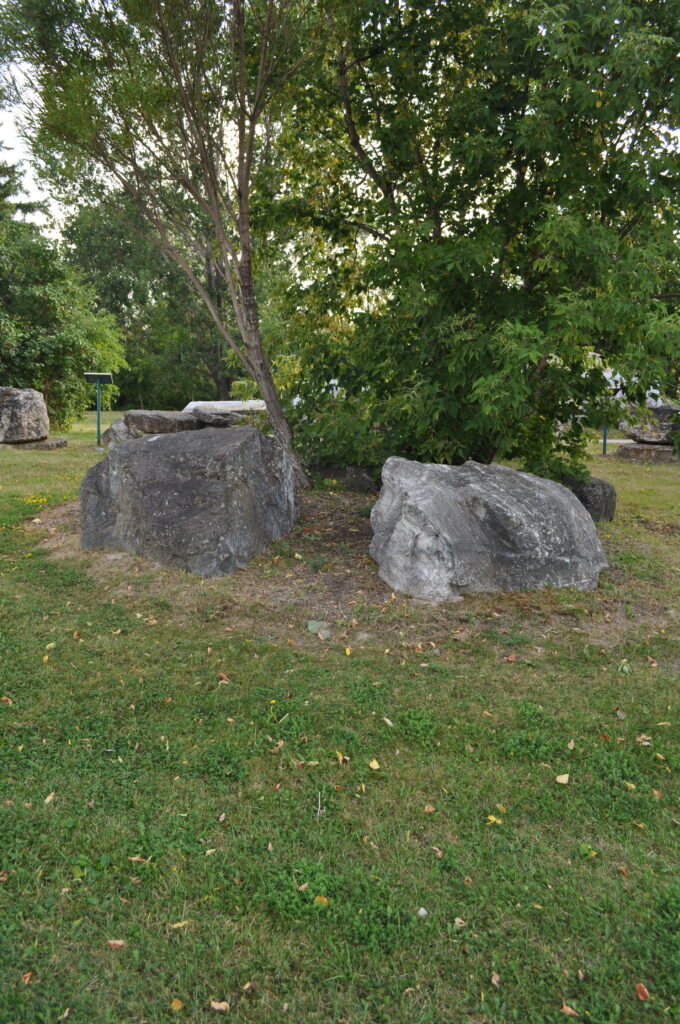
Cet espace circulaire, situé en face du sentier de l'Inukshuk, est la zone d'exposition de la suite de roches de la mine Marmarton. Nous utilisons ce site pour tester les compétences des « géologues en herbe ». Reportez-vous à « L'expérience Marmaton » à la fin de ce guide pour plus de détails (et de connexions internet).
CUL#9
Dry Stone Wall …In and around Cobalt, you can still see the remains of “Dry Stone Walls” primarily made from hand placed blocks of (blasted) Nipissing Diabase. Since 2012, training has been available for the construction of this feature by DIY Landscapers. It is proposed that RockWalk Park be a training site for this activity.
Internet seek: https://drystonecanada.com
CUL#10
Stone Sculptures: In New Brunswick, (and nearby Provinces and States) there are a series of massive granite artworks that have been sculptured in competition by sculptures from around the globe. These are distributed along the roads of the region in order to attract tourists. It is proposed that an annual competition be developed for RockWalk Park, (and Northern College parking lot) along the same vein. It would require sponsorship by a major Canadian mining industry partner.
Internet Seek: http://sculpturesaintjohn.com
CUL#11
Outdoor Exercise Park: it is proposed that an area (possibly near the new dormitory) be designed to feature exercises that require the use of various sizes and shapes of rock (boulders) to provide a unique exercise program for children, students, and adults.
Sponsor required.
CUL#12
This path, expected to be located between PGS #5 and Cul #5 will be modelled after a similar construction in the Botanic Gardens of Singapore, where rocks and reflexology have a long standing partnership. Visitors shed their shoes and socks and walk along the path to take advantage of the therapeutic effects of the
different size pebbles.
Internet: Seek “Reflexology Paths”
CUL#13
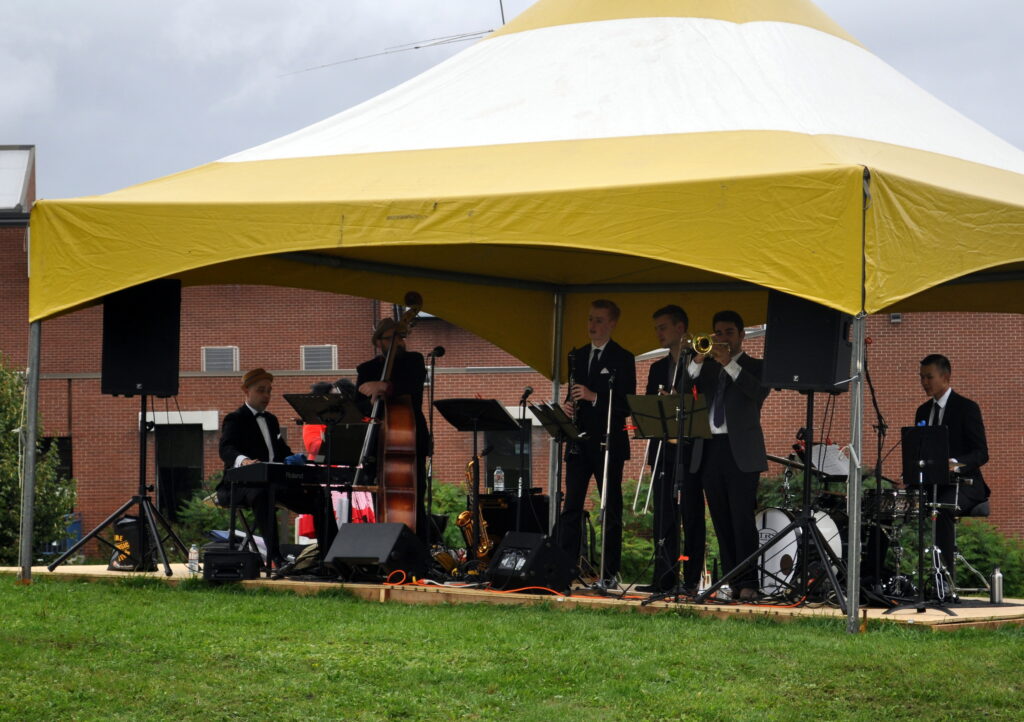
This was originally supposed to be a rock maze for kids. This changed in 2017 when we
realized that we needed an outdoor stage. A wooden platform was built beside the Inukshuk, just large enough to support a band and singer. The stage faces the area under a large Cottonwood tree. The site was used as such once, during the Ontario 150 years celebration, and worked out well. It is now proposed to develop a seated area on limestone blocks for this site.
It requires a sponsor.
CUL#14
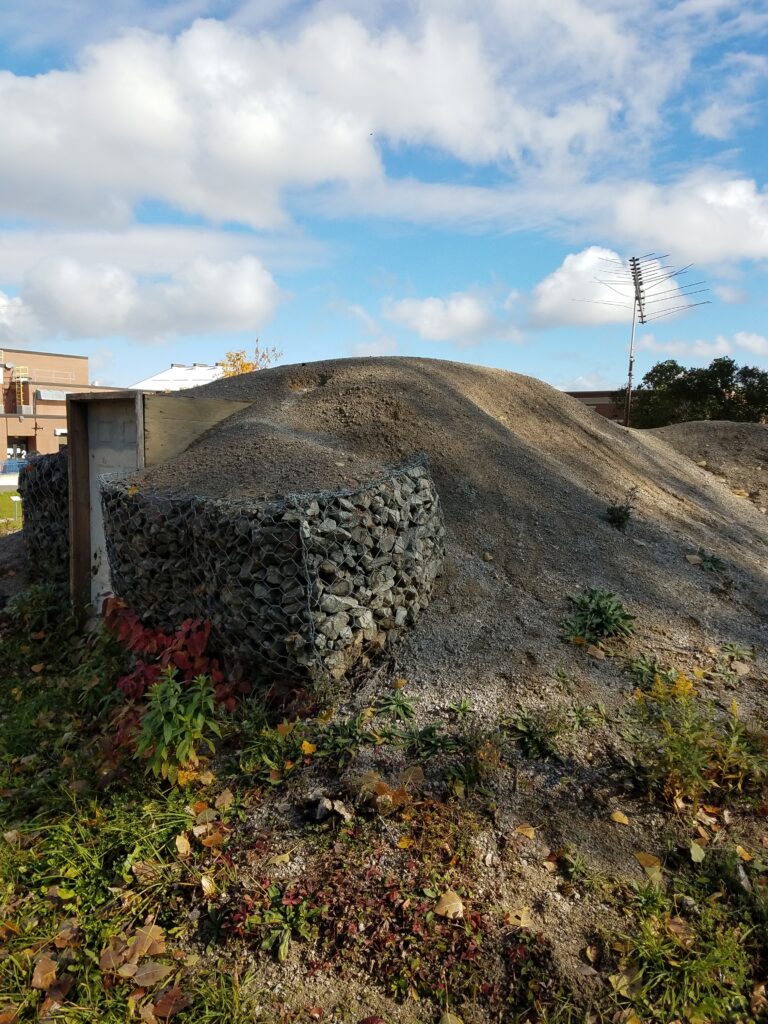
Ce monticule de gravier à l'allure folle, surmonté d'une antenne de télévision, a fait l'objet de nombreuses spéculations après avoir été érigé pour la première fois. Cependant, il tente de reproduire, dans une petite zone, l'environnement de Coober Pedy, en Australie-Méridionale, où la plupart des réserves mondiales d'opales blanches sont extraites. Dans cette région, les températures estivales dépassent couramment les 500C, ce qui est bien trop chaud pour travailler, sans parler de vivre.0C, which is far too hot for working, let alone living.
Par conséquent, les mineurs d'origine vivaient sous terre, et le seul signe de leurs maisons est ce que vous voyez - un monticule, une antenne de télévision, une cheminée et une porte. En fait, les mineurs ont créé une ville souterraine, avec un cinéma, une église, un bowling, plusieurs magasins et un motel sous le sol. En fait, le nom « Coober Pedy » serait un nom aborigène signifiant « homme blanc dans un trou ». 60 % de la ville vivait sous terre en 2016.
L'environnement est généralement si désolé, et les premiers habitants blancs étaient si désespérés de voir un arbre qu'ils en ont fabriqué un artificiel à partir de ferraille récupérée sur des épaves de voitures le long de l'autoroute. Ici, nous avons une excellente réplique fabriquée dans un style plus canadien par des étudiants en soudure du campus de Kirkland Lake du Northern College.
Voyage sur Internet...chercher : Unearth Coober Pedy by Jennifer Nalewicki
CUL#15
Rock games that would include 1. a CHESS board etched on a cut and polished rock ‘table’ (using ‘sliced’drill core as play pieces) 2. WARI (aka MANCALA)…this is an African game that requires a sequence of tiny pits cut into a rectangular rock ‘table’. The game requires tiny pebbles of different colours to be moved from pit to pit. Instructions for both games must be supplied on attached laser signage. There is room for these two games to be placed, with
rock seating, in the Queen’s Courtyard. 3. “Duck On A Rock” is a Huron based Indigenous game that is a feature of the “Huronia Museum and Huron Ouendat Village” (see internet) at Midland, Ontario. It teaches children and youth how to TRADITIONALLY survive and
feed both themselves and their families by pitching stones at a stone sculpture of a duck.
Proposed for the more seclude area to the west of the Bus Stop Shelter.
A sponsor is required for all three games (individually).
CUL#16
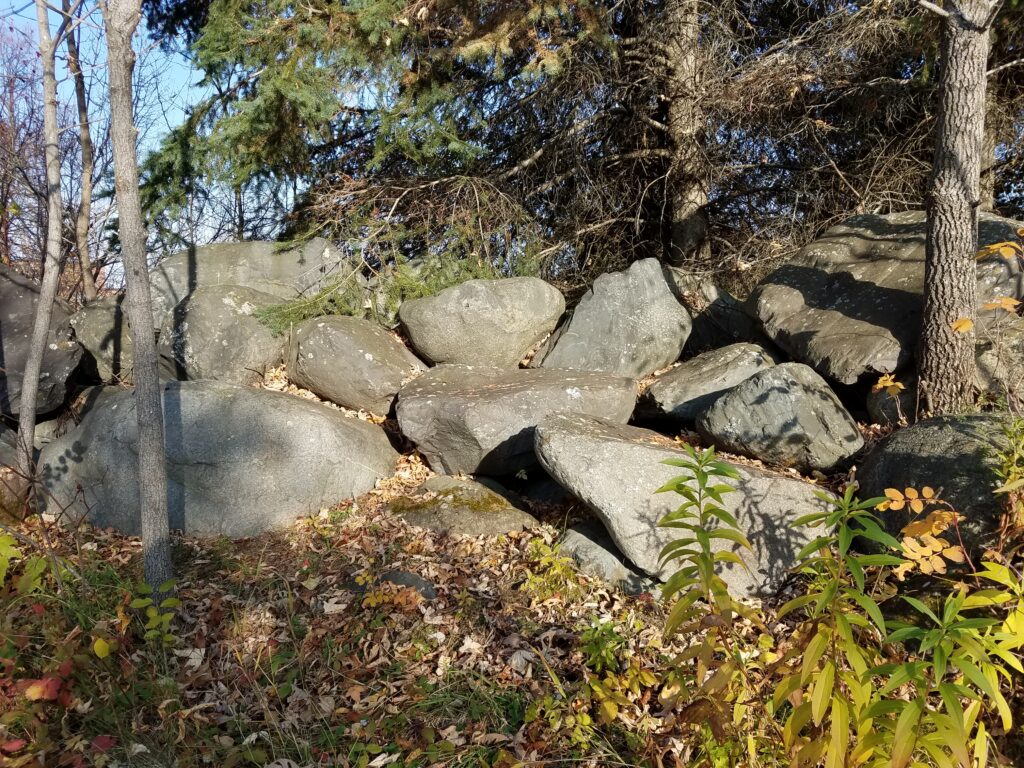
Au bout de cette boucle de sentier, vous verrez un mur de pierres, qui ressemble aux clôtures typiques construites sur les terres agricoles en Ontario, ainsi qu'aux barrières de pierres érigées en Europe pour empêcher les armées d'envahir.